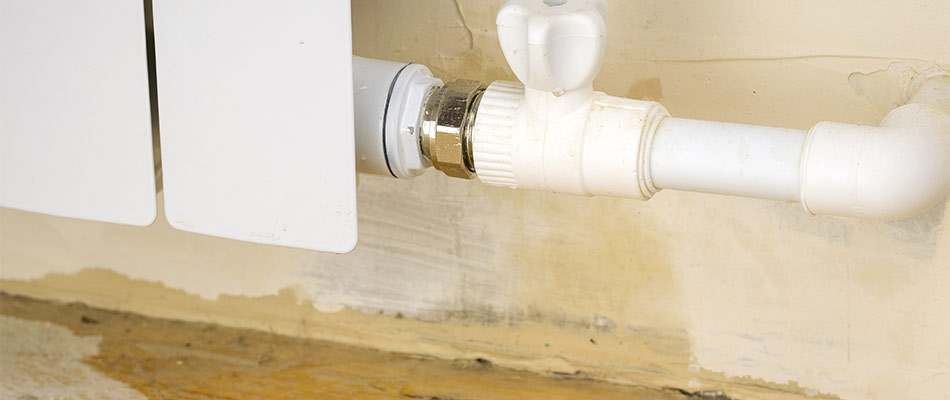Guide To Water Leakage Discovery In The House
Guide To Water Leakage Discovery In The House
Blog Article
Just how do you really feel in relation to Leaking water lines?

Early discovery of dripping water lines can reduce a potential catastrophe. Some tiny water leaks might not be visible.
1. Examine the Water Meter
Every residence has a water meter. Inspecting it is a surefire way that aids you find leaks. For beginners, switch off all the water resources. Guarantee nobody will certainly flush, utilize the tap, shower, run the cleaning device or dish washer. From there, go to the meter as well as watch if it will certainly change. Since no person is utilizing it, there must be no activities. That indicates a fast-moving leakage if it relocates. If you discover no modifications, wait a hr or 2 and also check back once again. This suggests you might have a slow-moving leakage that might even be below ground.
2. Examine Water Consumption
Examine your water expenses and also track your water consumption. As the one paying it, you need to notice if there are any disparities. If you identify sudden changes, regardless of your intake coinciding, it implies that you have leaks in your plumbing system. Remember, your water costs must fall under the exact same variety every month. An unexpected spike in your expense suggests a fast-moving leakage.
A constant boost every month, also with the very same habits, shows you have a sluggish leak that's also slowly escalating. Call a plumber to completely inspect your residential property, especially if you feel a warm location on your floor with piping underneath.
3. Do a Food Coloring Examination
When it comes to water consumption, 30% comes from bathrooms. If the shade somehow infiltrates your bowl throughout that time without flushing, there's a leak in between the tank and also dish.
4. Asses Outside Lines
Don't forget to examine your outdoor water lines as well. Must water permeate out of the connection, you have a loosened rubber gasket. One little leakage can throw away heaps of water and increase your water bill.
5. Inspect and also Examine the Situation
House owners need to make it a practice to examine under the sink counters as well as also inside cabinets for any kind of bad odor or mold development. These 2 warnings show a leakage so punctual attention is needed. Doing regular assessments, even bi-annually, can save you from a major issue.
Extra notably, if you know your house is already old, maintain a watchful eye on your heating systems, tubes, pipelines and so on. Look for discolorations and also compromising as a lot of pipelines as well as home appliances have a life span. They will also normally weaken because of tear and also wear. Do not wait for it to escalate if you presume dripping water lines in your plumbing system. Call a specialist plumber as soon as possible so you do not wind up with a terrible mess in your house.
Early detection of dripping water lines can alleviate a potential calamity. Some little water leakages may not be noticeable. Inspecting it is a surefire means that assists you uncover leakages. One little leak can throw away lots of water and surge your water costs.
If you think dripping water lines in your plumbing system, don't wait for it to rise.
How to Know If Your Home Has a Hidden Leak
Water Meter Reveals Inexplicable Water Usage
If you’d like to test whether or not there’s a leak somewhere in your home, you can do this using your water meter. Here is how to conduct the test:
Don’t use any water in your home for at least 30 minutes; this also means not turning on faucets or water-using appliances.
Go outside, and check your water meter for activity.
If your water meter shows that there was activity, even though no one was using any water, this proves that there is a leak in your home.Visible Mold or Mildew Growth
Leaks behind walls create moist, dark environments that allow mold and mildew to grow and thrive. Eventually, you might see mold growth forming on the wall closest to a hidden leak.
If mold is growing in an area that receives a high amount of moisture, such as a bathroom, it may simply be an indication that better ventilation is needed. However, if you see mold growth on a wall or the ceiling in an area where you would not expect, you probably have a hidden leak.
Musty, Mildew Odor
Sometimes you might not be able to see the mold or mildew that is growing as a result of a leak. However, the smell can give the problem away just as easily. If you catch a whiff of something musty, there’s a good chance that old water is collecting somewhere in your home that you can’t see.
Stained/Warped Walls, Ceilings, or Floors
When your home soaks up water, a variety of red flags can become visible, including ceiling stains, bubbling drywall, warped walls, and sagging floors. While these issues can be caused by excess humidity, they can also be signs that a pipe or plumbing connection has started leaking behind your walls.
Inexplicably High Water Bill
After a while, you get a general sense for what your water bill should be. If you own a pool or sprinkler system, your bill will tend to be higher during summer. However, if you receive a water bill that seems especially high, and you can’t figure out what caused it, then you may have a hidden leak somewhere that’s increasing your bill.
https://www.plumbingjoint.com/blog/2019/july/how-to-know-if-your-home-has-a-hidden-leak/

We had been guided to that report on Locating water leaks from a friend on a different web address. Sharing is good. Helping others is fun. Thank you so much for going through it.
Report this page